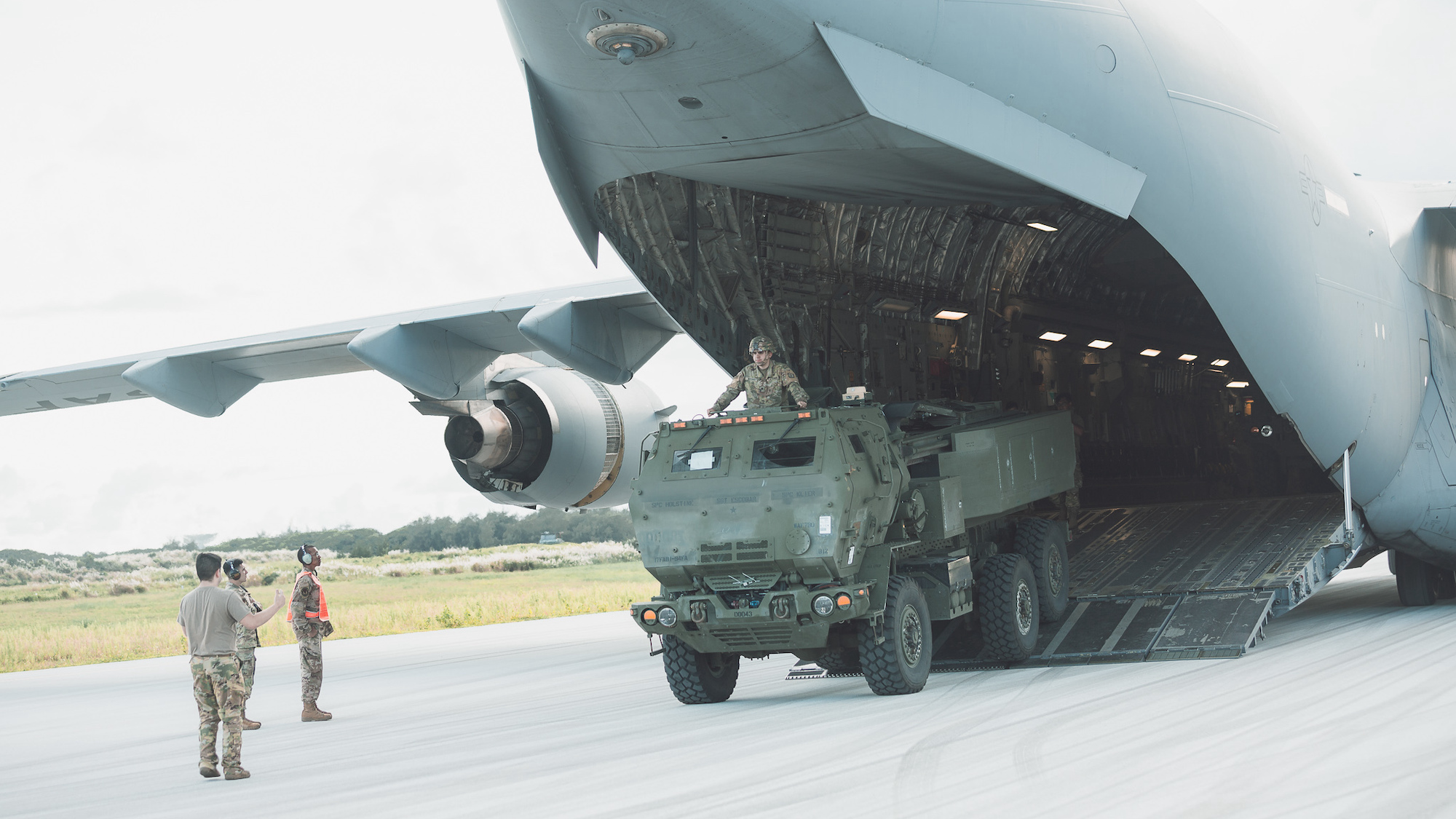

On February 3, Pentagon press secretary Brigadier General Pat Ryder confirmed that the United States was sending a type of munition called Ground Launched Small Diameter Bombs to Ukraine, among other equipment and weapons. The bombs will expand what Ukraine can do with existing weapons, and will fit into an overall buildup of armaments that should allow Ukraine to more effectively pursue its war to repel the Russian invasion, which began in February of last year.
“This gives them a longer-range capability,” said Ryder, who added that the weapons will help Ukraine “conduct operations in defense of their country and to take back their sovereign territory in Russian-occupied areas.”
The GLSDB, developed by American defense giant Boeing and Swedish defense manufacturer Saab, is a combination of a bomb with wings and a rocket engine. The rocket engines are the same as those used for boosters in an artillery rocket called the M26 Multiple Launch Rocket System. What the GLSDB adds on top of that rocket booster is a 250-pound bomb with a winged guidance system. Those wings fold out in flight, taking the weapon from a diameter of 9.5 inches to a flying bomb with a wingspan over 5 feet.
In other words, this bomb launches from a tube like a rocket, flies like a little plane, and then explodes like a bomb. That sets it apart from other bombs, which are dropped out of planes, or other artillery rounds, which arc back to the ground after launch.
The bomb features inertial guidance, which can plot the bomb’s path based on distance and direction traveled since launch, as well as GPS guidance. To protect against electronic interference, the Ground Launched Small Diameter Bombs include features to block jamming, and to block spoofing, or the injection of false coordinates into its navigation. Against sophisticated Russian electronic warfare tools, ensuring that bombs travel the paths intended is important.
But what really sets the GLSDB apart from other artillery rounds is the range: 93 miles, or 150 kilometers. Firing guided rockets, HIMARS have a range of 43 miles. The GLSDB more than doubles that range. Artillery can be useful for winning fights on static fronts, as it punishes hostile advances and can counter enemy artillery. Longer range artillery also lets Ukrainian forces attack positions further away from the front lines, especially supply depots and ammunition stockpiles. When Ukraine launched its counter-offensives in fall 2022, the increased range of HIMARs made it hard for Russian defenders to hold territory, and also denied supplies to other reinforcing Russian units.
“We’ve been focused on several key areas in the last few months to support Ukraine, specifically air defense capabilities, armor capabilities, long-range fires capabilities, and then combined with training in order to enable them to have the ability to conduct combined arms operations,” said Ryder.
The announcement of the GLSDB, described plainly as “precision-guided rockets,” came with a longer list of further material aid to the war from the United States. This includes ammunition for HIMARS, for other artillery, and for mortars, a small, soldier-portable weapon that can hurl bombs over obstacles and into trenches. The notice included anti-personnel weapons like Claymores, a close cousin of land mines, and heavy machine guns. Apart from the rockets, these weapons would all be familiar in form, generally speaking, to soldiers fighting in the trenches of World War I. (Rocket artillery dates to World War II.) Given the static fronts and held trenches in the Donbas, and especially around the Ukrainian city of Bakhmut, it is a familiar style of warfare.
What is newer are tools like thermal imagery sights paired to machine guns, which give users a powerful edge in night battles. Then there are MRAPs, or Mine Resistant Ambush Protected vehicles, which were heavily used by the United States to protect soldiers in Iraq and Afghanistan from roadside bombs; those are being sent to Ukraine where they can serve as useful transports especially in areas that might have landmines or unexploded bombs.
Counter-drone tools and ammunition, designed to spot the small flying scouts from observing soldiers in the field, are a modern reality paired with an older style of warfare. These, alongside anti-tank missiles and anti-air weapons, fit into the broader combined arms package prepared by the US and other countries for Ukraine. Following on the heels of January’s big push to commit heavy armored tanks to Ukraine, the nation should be in a better position to launch counter-offensives and drive back the invading forces.
Weapons like the Ground Launched Small Diameter Bomb, which extend the range of how and where Ukraine can strike, should give its military added depth and punch as it chooses battles in the coming months.
